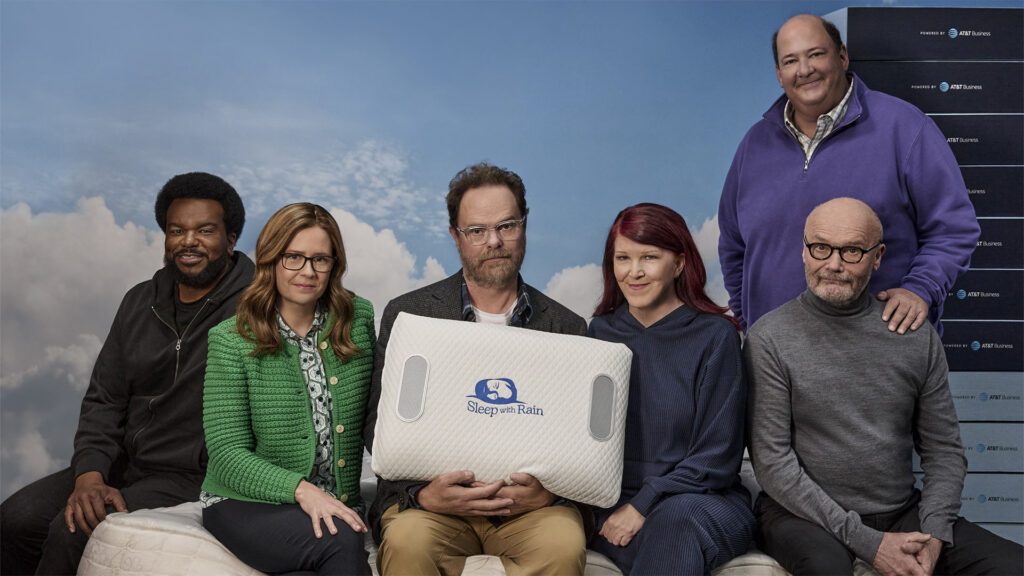Browse any industry trade publication and you’ll likely see mention of the rise of the in-house agency. Brands across nearly every category have built up internal creative, strategy, production and media operations in recent years for a number of reasons: it’s easier to get work done quickly, it can help with cost savings, and it gives the brand more control over the output.
Many brands who’ve built internal creative operations chose to focus on social and digital content in house. Hiring agencies for social creation and community management often costs the brand more money, usually taking longer for the content to be approved – whereas internal social creation means content can be concepted, shot and posted in a matter of hours. In the days of constant pivoting and real-time shutdowns, having that ability to move quickly is more valuable than ever to blue-chip brands.
Television is one place that most brands still choose to outsource the creative work to agencies,, as traditional ad agencies often have long-standing relationships with production companies, directors, casting agents and post-production houses.
Media, on the other hand, is another major area brands have chosen to bring in-house. While agencies, for the most part, still control the media buying and planning of traditional media like TV, radio and out-of-home, digital media is increasingly going in house, in part because platforms like Facebook made self-serve buying available years ago.
Despite the growth of internal operations, not every in-house agency has lasted. Intel’s Agency Inside shuttered its creative and production operations in late 2018 as part of a “strategic pivot” to focus more on account services. Still, building internal creative and media operations remains a huge opportunity for brands, and one that has only developed more nuance in a remote work environment.
To provide our community with more insight into the shift to in-house operations, Brand Innovators hosted its first In-House Summit Sept. 14, featuring executives from Hulu, Clorox, Anheuser-Busch, HP and Bayer. (To view the summit in full, go here.)
Here are 5 takeaways from those in-house leaders to help your in-house agency succeed long-term:
Even with an in-house agency, you need external partners. “We’ve really worked on recalibrating our team so we have the talent and the resources to keep innovating, both in house and externally. I believe that hybrid approach really is key,” said Shane Greenwood, Creative Director at Electro, Clorox’s internal agency. “There’s an important distinction that external resources and agencies bring to the table. They bring that independent, external view. You can’t access that when you’re too close to the politics and the legacy – we need to protect and preserve that. We can accomplish a lot ourselves, but we can also bring in external agency partners when we need that expertise. When we need the latest, greatest thinking, it’s really nice to have that ability to bring in that external expert.”
In-house agencies are collaborators, not competitors. Scott Donaton, Head of Creative at Hulu, oversees the internal teams that work on Hulu’s brand, content strategy and integrated advertising partnerships. And in all of those cases, he said, “I don’t want them to think of us as an in-house agency. Because the danger is that your co-workers begin to treat you as a vendor. The people that we work with are not our clients – we are their partners and teammates. When we work with outside agencies, which we always will, because we don’t want to become navel-gazers and there are certain capabilities and resources that we don’t have in house, we don’t want to be seen as a competitor to them – but instead as a collaborator. When we work with our advertising and brand partners, we don’t want their agencies to think of it as us trying to take their role. I think of us as an in-house creative studio, but I don’t think of us as an agency.”
Embrace the agility that comes with in-house resources. “Our motto with beer has always been that it brings people together, so amidst the pandemic, we really had to shift,” said Alisa Alexander, Head of Draftline, Local & Culture at Anheuser-Busch InBev’s in-house agency Draftline. “We invested a lot in social listening to understand what the consumer needs are and how that could align with different brands in our portfolio. With the pivot to virtual events, our production team has never been busier. We’re sending kits and equipment for campaigns with creative direction through Zoom, and building an infrastructure to review that type of creative. It’s a new world with remote production and working. It’s a new experience for anyone, whether you’re in-house or an external agency, so it’s all about being scrappy and agile.”
Hire talent with diverse backgrounds and experiences. “To build for the future, bringing things in house, you have to bring in diverse talent with diverse backgrounds and experiences,” said John Marshall, Head of North American Digital at HP. “You need to have people who will bring fresh ideas and innovation to the table and see your advertising through the lens of your customer base. It’s an entirely different skill set when shifting to in-housing, so it’s so important to have the right staff in place. The business is changing and evolving so quickly that you need to have people who are inquisitive, want to learn and are go-getters.”
Remove silos internally and find external partners who have done the same. “It’s all about being faster, better and more efficient, in everything that we do. Taking away the silos and hurdles of using an external company really allows you to improve upon those metrics that get you to operational and marketing excellence and really unprecedented outcomes,” said Paul Gelb, Head of Digital Activation and Investment at Bayer. “If you are purposeful in how you are spending your dollars and planning your strategy with a philosophy to continually get better and understand where the metrics are to execute, that will be key to your success.”



